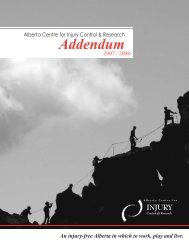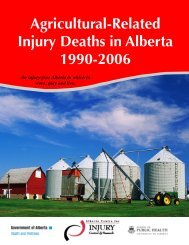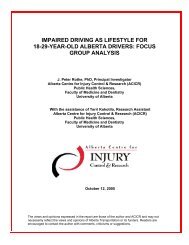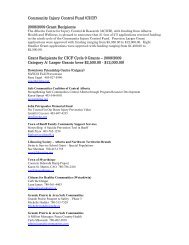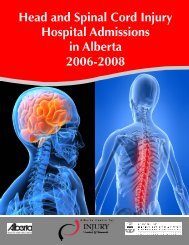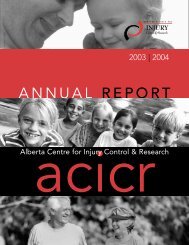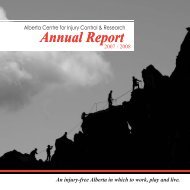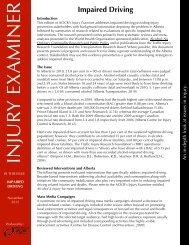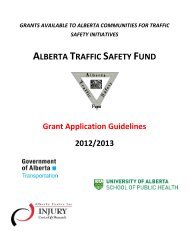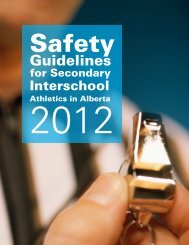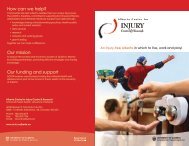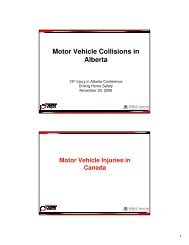Delegates Program - Alberta Centre for Injury Control & Research
Delegates Program - Alberta Centre for Injury Control & Research
Delegates Program - Alberta Centre for Injury Control & Research
You also want an ePaper? Increase the reach of your titles
YUMPU automatically turns print PDFs into web optimized ePapers that Google loves.
Night Ride:<br />
Piloting a late-night bus, using public transit, to provide a quick and safe late night transportation<br />
option and reduce taxi wait times <strong>for</strong> employees and patrons in the area.<br />
Speaker:<br />
Cindy Davies, Street-as-a-Venue Coordinator<br />
Whyte Avenue, Responsible Hospitality Edmonton, Sustainable Development City<br />
of Edmonton<br />
What was the actual and/or potential alcohol-related injury issue(s) you identified in your<br />
community?<br />
As noted in many cities, there is a lack of late night transportation options at closing time<br />
of licensed venues, particularly on weekends. This creates a competitive environment<br />
where impatience, frustration and discom<strong>for</strong>t can lead to anti-social behaviour;<br />
congestion on sidewalks can lead to aggression and violence, and patrons are exposed to<br />
increased risk <strong>for</strong> pedestrian-vehicle collisions in ef<strong>for</strong>ts to secure a ride. Community<br />
neighbours are disturbed<br />
What did you do to address the identified issue(s)?<br />
Trialed a late night public transit project that had buses run every 12 minutes on a circular<br />
route through the Whyte Avenue entertainment district, to University residences, through<br />
student populated communities and to a Taxi Stand from which patrons could take a cab<br />
to further destinations<br />
What outcomes did you observe?<br />
Late night patrons want to go home - the major complaint was the trial should have been<br />
more extensive to include more areas of the city<br />
Bus riders were pleased with an option of a warm, safe, low-cost ride that allowed them<br />
to leave the area. 70% of riders disembarked along the route. Those who used the Taxi<br />
stand stated the bus ride was preferable to competing <strong>for</strong> a cab on Whyte, as cabs were<br />
available within minutes<br />
There were no incidents of note at bus stops, on the bus, at the Taxi stand, in taxis or in<br />
communities along the route. There was only one “sick bus”. Numbers were not high<br />
enough to ascribe any definitive reductions in Police activity<br />
Taxi drivers used the taxi stand as it reduced their unpaid return time by 30 blocks and<br />
they avoided the risks of pedestrian collisions created by people wanting a cab running<br />
into the street on Whyte<br />
How might other <strong>Alberta</strong> communities use this in<strong>for</strong>mation?<br />
By identifying the magnitude of the gap between available transportation and the<br />
numbers of patrons who have chosen to not drink and drive, communities begin to<br />
understand the impacts created by this gap (litter, noise, public urination, vandalism and<br />
Page 12 of 37



